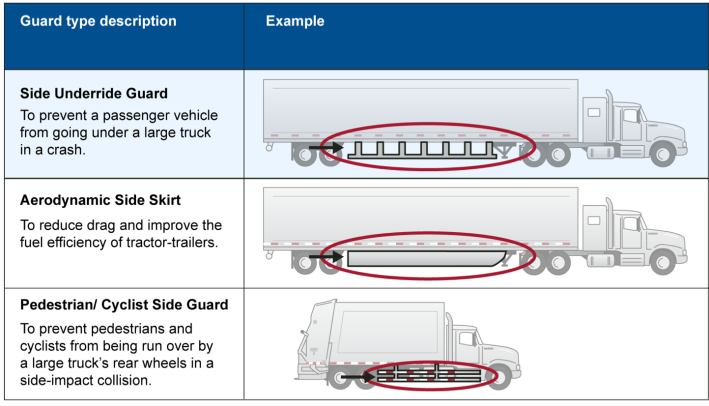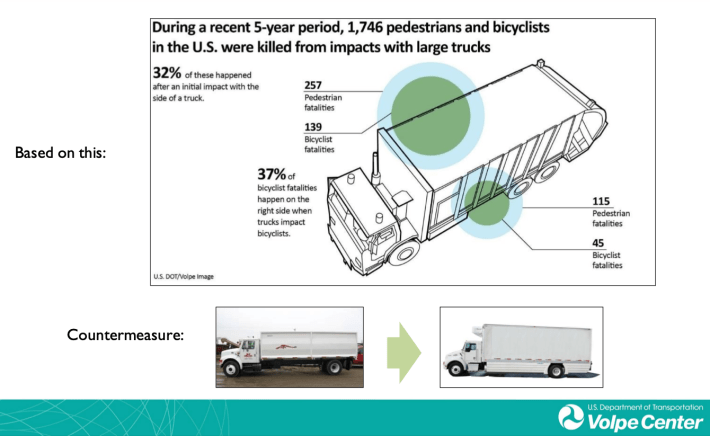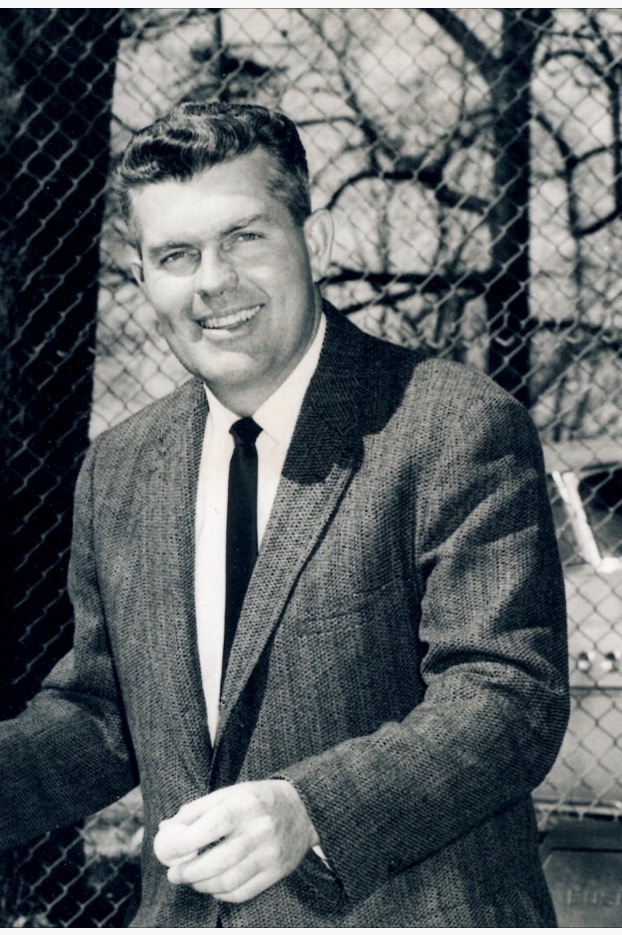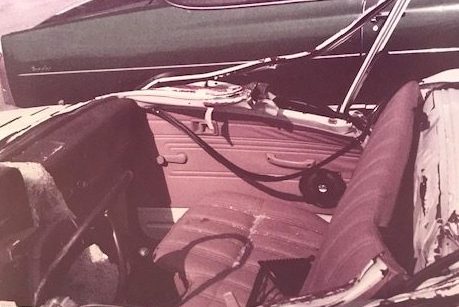Experts are slamming regulators for refusing to mandate simple technology that could save lives in large truck crashes, based on a faulty cost-benefit analysis that excludes pedestrian and cyclist deaths completely while underestimating — by a factor of 10 — the number of car occupants killed after getting trapped under big rigs.
In a must-watch new documentary released on Wednesday, journalists at PBS Frontline and ProPublica chronicled the roughly 70-year quest to get the National Highway Traffic Safety Administration to mandate effective “underride guards” on new commercial vehicles across America. The low-tech devices are more or less just large grates mounted on a front, rear or sides of a truck to prevent smaller vehicles and people from getting sucked under its wheels. But trucking industry lobbyists have treated them as an existential threat to their business, claiming that the cost to install the technology would run around $3,000 per vehicle, plus higher fuel costs, since guards weigh hundreds of pounds.
Advocates argue, though, that even that potentially inflated price tag is reasonable compared to the human costs of letting people die preventable and horrific deaths. According to Matthew Brumbelow, a senior research engineer at the Insurance Institute for Highway Safety, mandating side underride guards alone could save the lives of roughly 217 motorists per year; the National Highway Traffic Safety Administration, by contrast, estimated in an April report that only17 lives would be saved by the change, which the agency claims wouldn’t be worth the cost to the American economy.

As the grieving families of cyclists like Adam Uster and Sarah Langenkamp know all too well, motorists aren’t the only ones who die in underride crashes.
The documentarians also interviewed an anonymous DOT official about another report that seemed poised to come down in favor of mandating side guard technology specifically to save pedestrian, cyclists and motorcyclists — before it was “ultimately stripped and the results were changed” after lobbyist groups were permitted to redact the document heavily prior to publication. (Large trucks make up only four percent of vehicles on the road, but are involved in 7 percent of pedestrian and 11 percent of cyclist deaths, many of which involve the victim being swept under the wheels of a turning vehicle).

In an extensive May 19 letter to NHTSA, Brumbelow noted that an average of 53 bicyclists or pedestrians are killed each year when they’re swept under the wheels of a truck, in addition to 52 motorcyclists, who were also excluded from NHTSA’s analysis.
“While not all of these fatalities would be prevented by a side underride guard, the agency is overlooking roughly 100 annual fatalities by only including passenger vehicle occupants in its analysis,” Brumblebow emphasized.
Lateral Protection Devices, a type of side underride guard specifically aimed at saving vulnerable road users’ lives, have been mandated in at least 47 countries, and came standard on large trucks in Japan way back in 1979.
NHTSA will tell you that traffic fatalities are rising because of smart phones or distracted drivers or a wealth of other human errors. It's bullshit. NHTSA expressly fosters dangerous conditions at the behest of automakers and then blames us for being distracted when we die.
— Jessie Singer (@JessieSingerNYC) June 13, 2023
Lack of concern for vulnerable road users isn’t the only reason why NHTSA’s report seems to have underestimated these deaths so drastically. Experts point out that only 17 states currently even have a field for “underride” events on their crash reports — and that NHTSA hasn’t done enough to train states to properly document the problem or to accurately analyze the data they get.
“It’s literally a Catch-22,” said Zach Cahalan, executive director of the Truck Safety Coalition. “We’re essentially saying, ‘We can’t say whether there’s a problem unless we have the data, but we won’t collect the data because we’re not sure there’s a problem.'”
Cahalan also doesn’t accept that the industry argument that there’s no way to prevent underride deaths without imposing unsurvivable costs on small trucking operators, especially given that prices would almost certainly come down if the technology were adopted widely. He also doesn’t buy the argument that next generation safety measures like automatic emergency braking systems are good enough — especially considering that today’s AEB systems only prevent about half of large truck crashes, and do nothing to help in many common underride scenarios, like T-bone collisions.
“[In the trucking industry], much more effort has gone into undermining rulemaking and strategizing to avoid liability in lawsuits than has gone into solving this issue,” he added. “I don’t think anyone can tell you with a straight face that [since the first underride standards were introduced in 1953], we’ve somehow lacked the technical know-how to design a strong structure that can be attached to the sides of a truck to prevent people from going underneath it. That is absurd and impossible to believe. Come on: in that same time, we’ve put a man on the moon.”

Few have waited longer for strong underride protections than Jennifer Tierney, who lost her father, Jim Mooney, to a crash with a large truck on a dark rural road in 1983. She’s still haunted by the horror of what happened to his body, which sustained such severe injuries to the head and neck that paramedics could not locate his airway.
“People don’t realize how incredibly violent these deaths are,” Tierney said. “We couldn’t even open his casket; they told us to remember him how he was.”
In the 40 years since, Tierney has fought tirelessly, and sometimes successfully, for common-sense vehicle safety regulations that might have saved her father’s life, like reflective tape on big rig bumpers. Her father’s photo even hangs in the offices of the Federal Motor Carrier Safety Administration, alongside images of other victims.

Her fight for side underride guards, though, has proven to be among the most difficult to win — not least because experts say regulators are unlikely to adopt an auto safety rule that costs the industry more than $12.5 million for each life saved, and NHTSA’s dubious math places side underride guards above that threshold.
“If sombebody had come up and offered my mother $12.5 million, but said they’d take away my Daddy, would she have taken it? Absolutely not,” Tierney says. “She wouldn’t have taken $100 million. There’s no amount of money in the world. How insulting for you to put a price tag on anybody’s loved one…If people are getting killed and there is a fixable solution, I don’t care how much it costs. NHTSA needs to do its job.”






